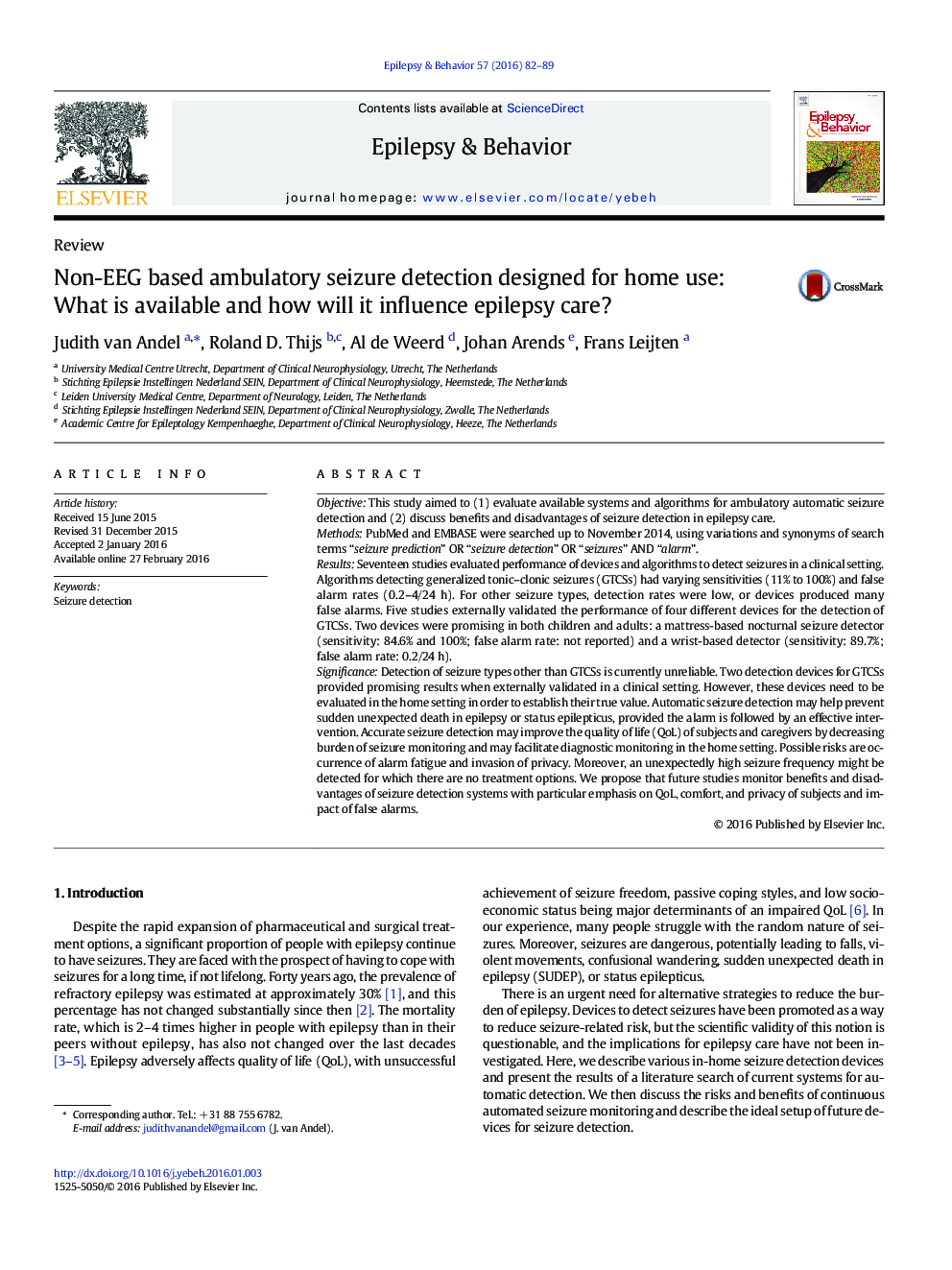| کد مقاله | کد نشریه | سال انتشار | مقاله انگلیسی | نسخه تمام متن |
|---|---|---|---|---|
| 6010204 | 1185874 | 2016 | 8 صفحه PDF | دانلود رایگان |

- We evaluated systems and algorithms for ambulatory automatic seizure detection.
- Detection of seizure types other than generalized tonic-clonic is unreliable.
- Two detectors of generalized tonic-clonic seizures show promising results in clinic.
- Evaluation in home setting necessary to assess true value of seizure detectors
- Seizure detection may help prevent SUDEP and improve the QoL of patients and caregivers.
ObjectiveThis study aimed to (1) evaluate available systems and algorithms for ambulatory automatic seizure detection and (2) discuss benefits and disadvantages of seizure detection in epilepsy care.MethodsPubMed and EMBASE were searched up to November 2014, using variations and synonyms of search terms “seizure prediction” OR “seizure detection” OR “seizures” AND “alarm”.ResultsSeventeen studies evaluated performance of devices and algorithms to detect seizures in a clinical setting. Algorithms detecting generalized tonic-clonic seizures (GTCSs) had varying sensitivities (11% to 100%) and false alarm rates (0.2-4/24Â h). For other seizure types, detection rates were low, or devices produced many false alarms. Five studies externally validated the performance of four different devices for the detection of GTCSs. Two devices were promising in both children and adults: a mattress-based nocturnal seizure detector (sensitivity: 84.6% and 100%; false alarm rate: not reported) and a wrist-based detector (sensitivity: 89.7%; false alarm rate: 0.2/24Â h).SignificanceDetection of seizure types other than GTCSs is currently unreliable. Two detection devices for GTCSs provided promising results when externally validated in a clinical setting. However, these devices need to be evaluated in the home setting in order to establish their true value. Automatic seizure detection may help prevent sudden unexpected death in epilepsy or status epilepticus, provided the alarm is followed by an effective intervention. Accurate seizure detection may improve the quality of life (QoL) of subjects and caregivers by decreasing burden of seizure monitoring and may facilitate diagnostic monitoring in the home setting. Possible risks are occurrence of alarm fatigue and invasion of privacy. Moreover, an unexpectedly high seizure frequency might be detected for which there are no treatment options. We propose that future studies monitor benefits and disadvantages of seizure detection systems with particular emphasis on QoL, comfort, and privacy of subjects and impact of false alarms.
Journal: Epilepsy & Behavior - Volume 57, Part A, April 2016, Pages 82-89